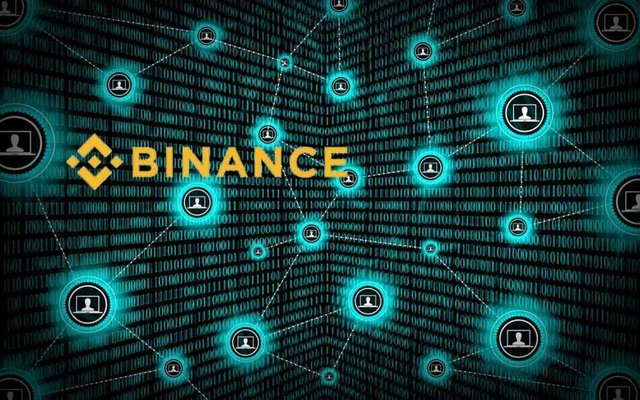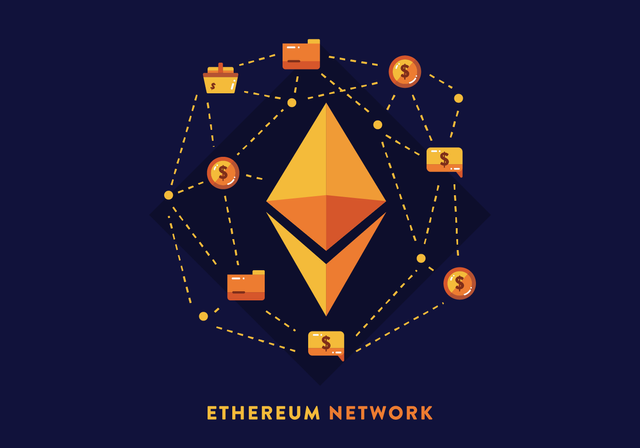CRYPTO ACADEMY season 2, week 1 Homework post @alphafx//Blockchain Platforms
- Simply, block chain is a system in which a record of transactions made in bitcoin or other cryptocurrencies are recorded across several computers that are linked in a peer-to-peer network.
- What are block chain platforms?
Blockchain platforms are emerging platforms and, at this point, nearly indistinguishable in some cases from core blockchain technology. They are being used for generalized distributed value exchange, consisting of an expanding list of cryptographically signed, irrevocable transactional records shared by all participants in a network.
source
TWO EXAMPLES OF BLOCKCHAIN PLATFORMS
- BSC (Binance Smart Chain) platform
- Etherium (ETH) blockchain platform
BSC (Binance Smart Chain) platform

source
Binance Smart Chain is Binance’s smart contract platform for decentralized apps (dapps). Specifically, the network uses a modified version of proof-of-stake (PoS) consensus known as a proof-of-staked-authority (PoSA) algorithm. Simply put, this means BSC is centered upon 21 validators who stake BNB in order to validate the BSC network.
As such, this may be a layer-one (L1) smart contract platform, but it’s also extremely centralized with 21 validators compared to the 1,000s of validators that Eth2 will have. This small set of validators, vetted by Binance, makes it easier for the crypto exchange giant to exert direct control over the network.
Another central aspect of BSC is that it’s compatible with Ethereum’s EVM, which lets BSC developers to easily migrate over popular Ethereum dapps and solutions via loosely-modified forks. This is why the vast majority of dapps on BSC today are essentially direct copies of Ethereum dapps, like how PancakeSwap was forked from Uniswap and Sushiswap.
source
ETHEREUM BLOCKCHAIN & HOW IT WORKS
Ethereum is an open-source, decentralized network that allows smart contracts to be deployed on a blockchain with the use of ether. It’s a blockchain app (Dapp) platform that uses gas to run – in short. The network was created by Vitalik Buterin in 2015 although the white paper was proposed 2 years earlier.
That’s a mouthful though! Let’s convert that into plain English by dissecting each word at a time:
WHAT IS ETHEREUM BLOCKCHAIN?
Ethereum blockchain is a distributed database that is constantly growing and therefore adding a new block to the chain every ≈17 seconds on average. Each new block contains records such as transactions and contracts.
The operations and transactions are executed and then calculated on the go thanks to the computing nodes. These are tens of thousands of computers spread around the world (users who opted-in to be part of the blockchain network).
All participant computers use a client that performs validating and relaying transactions on the blockchain. It’s worth noting that no decentralized technology would exist without them. These computers are incentivized for their work with Ether which is rewarded to them every time a block gets solved.
source
Similarities Between Binance Smart Chain and Ethereum Network.
• Both start with the address prefix ‘0x’.
• Both are compatible with the Ethereum Virtual Machine (EVM).
• Addresses of both networks work on both explorers.
• Both networks work on Metamask.
Differences Between Binance Smart Chain and Ethereum Network.
• BSC tokens are called BEP20 while ETH tokens are called ERC20 tokens.
• BSC address though it has similar address format with ETH won’t bring out the ETH wallet balance of an ETH address on its chain explorer neither will BSC bring out the same for ETH on its network.
• We have etherscan.io explorer for ETH network and bscsan.com for BSC network, all built by Etherscan Team.
source
Conclusion
Having looked at the above blockchain networks/platforms, their similarities and differences, it is left for one to choose among them, the one which best suits his or her needs.
I am open to questions as regards the above topic.
I am saying a very big thank you to @alphafx for the lectures. Its a great opportunity for me to learn more.


0% Proof of Brain all of the data was copied from other sites and pasted here @alphafx
Hello, the aim of the academy is to teach you to understand, and homework tasks are for you to show you have learnt and even done more research. While you cited your sources, the whole post is not original and this defeats the concept of proof of brain reward system on steemit.
I look forward to seeing you put in more effort subsequently, and see for yourself how much progress you will make.
Scoring
Thank you for participating.